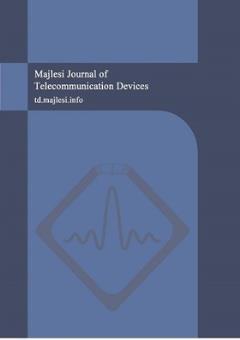Existence Of Excitatory and Inhibitory Oscillators in The Small World Network and Its Dynamic Effect on Network Synchronization
Subject Areas : Majlesi Journal of Telecommunication Devicestayebeh nikfard 1 * , Ravindra Kumar 2
1 - Department of Physics, Mobarakeh Branch, Islamic Azad University, Mobarakeh, Iran.
2 - Department of Physics, Radha Govind UniversityRamgarh 829122, India
Keywords: Kuramoto, Synchronization, Small World Network, Inhibitory Oscillator, Excitatory Oscillator.,
Abstract :
Synchronization was investigated in Watts-Strogats small world network with inhibited and excitable oscillators. According to the Kuramoto model in the small world network, with the increase in the limited number of inhibited oscillators, the synchronization in the system will be accompanied by network defects, and with their increase, the synchronization will also increase, and after reaching its maximum value, it will begin to decrease. That is, with a certain ratio of inhibitory oscillators to excitation depending on the coupling strength, network synchronization is maximum. As the coupling strength of the oscillators increases, the interval of the number of inhibitions for which the network is in synchronization decreases. This result is not related to a specific small world network and has been observed by repeating it in different small world networks. Excitatory and inhibitory oscillators are in phase up to a certain percentage of inhibitory oscillators in the network (depending on the coupling strength).
[1] Solé, Ricard V, Corominas-Murtra, Bernat, Valverde, Sergi, and Steels, Luc. Language networks: Their structure, function, and evolution. Complexity, 15(6):20–26, 2010.
[2] Newman, MEJ. The structure and function of complex networks, siam re-view, 45, 167–256. Cerca con Google, 2003..
[3] Watts, Duncan J and Strogatz, Steven H. Collective dynamics of ‘small-world’networks. nature, 393(6684):440, 1998.Plasma Sci. [Online]. 21(3), pp. 876-880. Available:
[4] Strogatz, Steven H and Stewart, Ian. Coupled oscillators and biological synchronization. Scientific American, 269(6):102–109, 1993.
[5] Keane, Andrew, Dahms, Thomas, Lehnert, Judith, Suryanarayana, Sachin Aralasurali, Hövel, Philipp, and Schöll, Eckehard. Synchronisation in networks of delay-coupled type-i excitable systems. The European Physical Journal B, 85(12):407, 2012.
[6] Miyano, Takaya and Tsutsui, Takako. Data synchronization in a network of coupled phase oscillators. Physical review letters, 98(2):024102, 2007.
[7] Díaz-Guilera, Albert, Gómez-Gardenes, Jesús, Moreno, Yamir, and Nekovee, Maziar. Synchronization in random geometric graphs. International Journal of Bifurcation and Chaos, 19(02):687–693, 2009.
[8] Rohden, Martin, Sorge, Andreas, Timme, Marc, and Witthaut, Dirk. Self-organized synchronization in decentralized power grids. Physical review letters, 109(6):064101, 2012.
[9] Winfree, Arthur T. Biological rhythms and the behavior of populations of coupled oscillators. Journal of theoretical biology, 16(1):15–42, 1967.
[10] Kuramoto, Yoshiki. Chemical oscillations, waves, and turbulence. Courier Corporation, 2003.
[11] Kuramoto, Yoshiki. Self-entrainment of a population of coupled non-linear oscillators. in International symposium on mathematical problems in theoretical physics, pp. 420–422. Springer, 1975.
[12] Y. kuramoto: Chemical oscillations, waves, and turbulence, springer-verlag, berlin and new york, 1984, viii+ 156, 25× 17cm, 9,480 ff (springer series in synergetics, vol. 19). 40(10):817–818, 1985.

